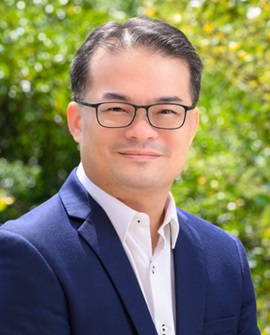Boon Seng SOH

SUMMARY
In 2011, Dr. Soh joined the laboratory of Prof. Kenneth Chien at Harvard University, where he delved into the biology of multipotent cardiac stem cells, utilizing both murine and human-based model systems. His research is deeply rooted in clinical applications, with a focus on unravelling the molecular and cellular mechanisms of diseases and developing innovative therapies. Dr. Soh has made substantial contributions to the field, notably in establishing a 3D chambered cardiac organoid model.
His current research interests include modelling human cardiovascular diseases using 2D and 3D culture systems, investigating cardiac aging, and studying heart metabolism. He has adeptly integrated AI and machine learning into his analysis of cardiac functions, enhancing the understanding of disease onset and progression. Additionally, he is exploring bioprinting techniques to improve the robustness and reproducibility of organoid models for therapeutic development.
- 2025: RIE2025 HBMS Industry Alignment Fund – Pre-Positioning (IAF-PP) Theme PI. (PREVENT-HF)
- 2024: National Medical Research Council, Singapore. Open Fund –Individual Research Grant (OF-IRG) Co-I.
- 2023: National Medical Research Council, Singapore. Open Fund – Young Individual Research Grant (OF-YIRG) Co-I.
- 2020: RIE2020 HBMS Industry Alignment Fund – Pre-Positioning (IAF-PP) Theme PI. (TEx2Pharm)
- 2020: EVX-A*STAR Platinum grant. Co-I.
- 2016: National Medical Research Council, Singapore. Open Fund – Young Individual Research Grant (OF-YIRG) PI.
My research is dedicated to advancing our understanding of cardiovascular diseases by employing sophisticated modeling techniques in both 2D and 3D organoid systems. This multidimensional approach aims to unravel the intricate molecular and cellular mechanisms that underlie the onset and progression of cardiovascular diseases, particularly those influenced by aging, such as cardiac hypertrophy, fibrosis, and arrhythmias. To achieve this, I integrate cutting-edge technologies from various disciplines, including CRISPR-based gene editing, and single-cell RNA sequencing, microfluidics, biolasers, artificial intelligence (AI), and machine learning. My research plan includes several key components aimed at generating impactful and translatable findings:
1) Overcoming critical limitations in cardiovascular research and exploring cardiac complications in other disease models.
2) Enhancing methods for assessing cardiac functions in vitro through the use of cardiac organoid models and advanced analysis platforms.
3) Developing models for cardiovascular diseases and therapeutics.
4) Investigating the potential of mitotherapy to counteract metabolic dysfunction in aging-related cardiovascular diseases.
By combining these diverse approaches, my research aims to shed light on the complex nature of cardiovascular diseases and expedite the development of targeted therapeutics. This comprehensive strategy fosters a holistic understanding of the diseases at both the macro and micro levels, paving the way for innovative interventions and advancements in cardiovascular health. Through these initiatives, I aspire to contribute significantly to the field, offering innovative solutions that will not only advance our understanding but also pave the way for effective therapeutic interventions.
- JAK2 as a surface marker for enrichment of human pluripotent stem cells-derived ventricular cardiomyocytes.
Liew LC, Poh BM, An O, Ho BX, Lim CYY, Pang JKS, Beh LY, Yang HH, Soh BS.* (2023)
Stem Cell Res Ther. 14(1): 367.
*Corresponding author - Robust generation of human-chambered cardiac organoids from pluripotent stem cells for improved modelling of cardiovascular diseases.
Ho BX, Pang JKS, Chen Y, Loh YH, An O, Yang HH, Seshachalam VP, Koh JLY, Chan WK, Ng SY*, Soh BS.* (2022)
Stem Cell Res Ther. 13(1): 529.
*Corresponding authors - Characterizing arrhythmia using machine learning analysis of Ca2+ cycling in human cardiomyocytes.
Zheng-Shan Chong, Zi Jian Khong, Shermaine Huiping Tay, Shi-Yan Ng* (2022)
Stem Cell Reports. 17(8): 1810-1823.
*Corresponding author
- Up-regulation of JAK-STAT pathway promotes maturation of human embryonic stem cell-derived cardiomyocytes.
Ho BX, Yu H, Pang JKS, Hor JH, Liew LC, Szyniarowski P, Lim YY, An O, Yang HH, Stewart CL, Chan WK, Ng SY, Soh BS.* (2021)
Stem Cell Reports. 16(12): 2928-2941.
*Corresponding author
- Microhexagon gradient array directs spatial diversification of spinal motor neurons.
Lim GS, Hor JH, Ho NRY, Wong CY, Ng SY, Soh BS*, Shao H*. (2019)
Theranostics.9(2):311-323.
*Corresponding authors
- Mitochondrial 3243A > G mutation confers pro-atherogenic and pro-inflammatory properties in MELAS iPS derived endothelial cells.
Pek NMQ, Phua QH, Ho BX, Pang JKS, Hor JH, An O, Yang HH, Yu Y, Fan Y*, Ng SY*, Soh BS.* (2019)
Cell Death Disease. 10(11): 802. *Corresponding authors
- SG11202100006QA/US20210317412A1/CN112424340B
Method for isolating a cardiomyocyte population
Inventors: Soh Boon Seng
A*STAR celebrates International Women's Day

From groundbreaking discoveries to cutting-edge research, our researchers are empowering the next generation of female science, technology, engineering and mathematics (STEM) leaders.
Get inspired by our #WomeninSTEM
.png?sfvrsn=c3edc68e_6)